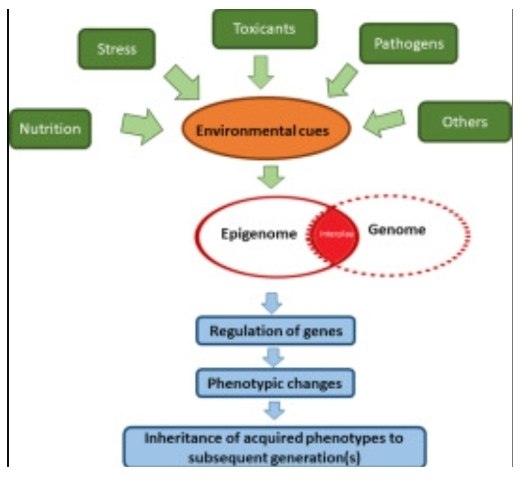Evolution By jumps - HGT and Epigenetics leaves Darwin Behind
The concept of "saltational" changes in evolution, suggesting rapid, large-scale evolutionary shifts, has gained renewed attention with the increasing understanding of horizontal gene transfer (HGT) and epigenetics. Here's a breakdown of how these factors can contribute to evolutionary leaps beyond the gradual changes traditionally associated with evolution:
Horizontal Gene Transfer (HGT): A Catalyst for Rapid Change
Definition:
HGT is the transfer of genetic material between organisms other than through traditional parent-offspring inheritance. This process is particularly prevalent in bacteria but also occurs in other organisms.
Impact on adaptation:
HGT can introduce entirely new genes and capabilities into an organism's genome in a single event. This can lead to dramatic phenotypic changes, such as antibiotic resistance in bacteria or the acquisition of new metabolic pathways.
Such sudden acquisition of new traits can be considered saltational, as it deviates from the gradual accumulation of mutations.
HGT can facilitate rapid adaptation to new environments or challenges, accelerating evolutionary change.
Beyond Species Boundaries:
Because HGT can occur between distantly related organisms, it can blur traditional species boundaries and facilitate the rapid spread of advantageous traits across diverse lineages. This is especially true within microbial communities.
Epigenetics: Modifying Gene Expression
Definition:
Epigenetics involves changes in gene expression that do not involve alterations to the underlying DNA sequence as with Neo-Darwinism. These changes can be influenced by environmental factors and can be heritable.
Impact on Evolution:
Epigenetic modifications can rapidly alter an organism's phenotype in response to environmental cues.
The long-term heritability of epigenetic changes can contribute to phenotypic variation and potentially facilitate adaptation.
Epigenetic changes can create a buffer, allowing organisms to survive stressful situations, and giving the organisms time for genetic mutations to occur that solidify the needed adaptations.
Saltational Potential:
In some cases, epigenetic changes can lead to significant phenotypic shifts that resemble saltational changes.
Combined with HGT, epigenetics can amplify the impact of newly acquired genes by modulating their expression.
The Interplay of HGT and Epigenetics
Amplifying Evolutionary Change:
HGT can introduce new genetic material, while epigenetics can fine-tune the expression of those genes, leading to rapid and substantial phenotypic changes.
This interplay can accelerate adaptation and contribute to the emergence of novel traits and even new species.
Facilitating Adaptation:
In rapidly changing environments, the ability to quickly acquire and modulate gene expression can be crucial for survival. HGT and epigenetics provide mechanisms for such rapid adaptation.
Implications:
These processes challenge the traditional view of evolution as a purely gradual process, highlighting the potential for rapid, large-scale evolutionary change.
The understanding of these processes is changing the way scientists view evolutionary time scales, and the ways that organisms adapt to their surroundings.
In essence, HGT provides the raw material for rapid change, while epigenetics provides the means to quickly modulate and fine-tune that change. This combination can lead to saltational evolutionary events, where organisms undergo significant phenotypic shifts in relatively short periods.






Comments
Post a Comment